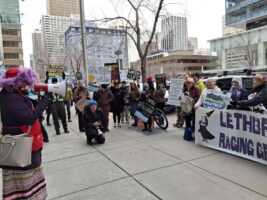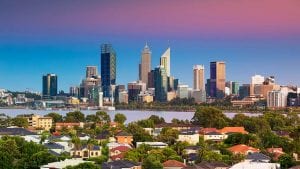Australia could avoid punishingly long heatwaves and boost the Great Barrier Reef’s chances of survival by helping to limit global warming to 1.5℃ rather than 2℃, according to a report released by the Climate Institute today.
Australia, along with 179 other countries, has formally signed the Paris climate agreement. The deal, which has not yet come into force, commits nations to limit Earth’s warming to “well below 2℃” and to aim for 1.5℃ beyond pre-industrial temperatures.
The new research, compiled by the international agency Climate Analytics, suggests that limiting global warming to 1.5℃ rather than letting it reach 2℃ could make a significant difference to the severity of extreme weather events in Australia. Heatwaves in southern Australia would be an average of five days shorter, and the hottest days a degree cooler. In the north, hot spells would be 20-30 days shorter than the 60-day heatwaves potentially in store if warming hits 2℃.
Under 2℃ warming, the world’s coral reefs would have a “very limited chance” of survival, whereas limiting warming to 1.5℃ would allow “some chance for a fraction of the world’s coral reefs to survive”, the report says.
Sarah Perkins-Kirkpatrick, a climate researcher at UNSW Australia, said that while the 0.5℃ difference between the two targets might not sound like a lot, it would lead to “clearly noticeable” differences in regional climates, including Australia’s.
“This is particularly true for extreme events, where just a small change in average temperature corresponds to larger changes in events like temperature extremes, especially in their frequency and duration,” she said.

University of Melbourne researcher Andrew King, who studies climate extremes, said the report “paints a grim picture for the future”, given that Australia is already experiencing climate-driven events such as this year’s unprecedented bleaching on the Great Barrier Reef.
“There are many benefits if warming could be limited to 1.5℃, with less frequent and intense extreme weather. On the other hand, we are entering the unknown if we allow warming to surpass 2℃, as tipping points in the Earth’s climate system make accurate predictions difficult to make,” Dr King said.
The report predicts that half of the world’s identified tipping points – such as the collapse of polar ice sheets and the drying out of the Amazon rainforest – would be crossed under 2℃ warming, compared with 20% of them at 1.5℃.
Tall order
The problem is that keeping warming to 1.5℃ is now a very onerous, if not impossible, task. It would require the world to peak its emissions by the end of this decade, with a future “carbon budget” of just 250 billion tonnes of CO₂. To put that in context, global carbon emissions in 2014 were 36 billion tonnes.
Given the low probability of reducing emissions at the speed required, the report argues that untested “negative emissions” technologies (removing carbon dioxide from the atmosphere) will be needed after 2030.
However, Kate Dooley, a PhD candidate at the University of Melbourne, questioned the report’s suggested reliance on negative emissions.
“Assuming carbon can be removed from the atmosphere on a large scale later in the century is a bad strategy for climate mitigation. Relying on negative emissions to “undo” earlier emissions may lock us into higher levels of warming if the expected technologies do not materialise or pose unacceptable social and ecological risk,” she said.
Stronger targets
In a separate report, the Climate Institute recommends that Australia adopt greenhouse gas targets of 45% below 2005 levels by 2025, and 65% by 2030, if it is to do its fair share in achieving the Paris Agreement’s goals.
The institute also recommended that Australia phase out coal-fired electricity generation by 2025, increase renewable generation to 50% by 2030, and double energy productivity by 2030.
It argues for a carbon price, and urges politicians to factor the costs and benefits of climate change and climate action formally into all policy decisions.
Australia’s current climate target under the Paris Agreement is 26-28% below 2005 levels by 2030. Labor has proposed a 45% target, and the Greens zero or negative emissions within a generation.
Australia will review its climate policies in 2017, ahead of the first global stocktake of nations’ Paris Agreement targets in 2018.
Dooley said that ultimately “we have left climate action so late that some level of carbon removals will be required due to historical emissions already in the atmosphere. Assuming negative emissions will only be available at very low levels will force us to re-examine what is possible in terms of dramatic emission reductions.”
Dr King said the results “highlight the pressing need to take immediate and drastic action to reduce our greenhouse gas emissions”. In a recent Conversation article, he and his colleague Ben Henley explained that the world is already closing in fast on the 1.5℃ warming target.
“We know that we will go past 1.5℃ in the near future and we would need large-scale negative emissions schemes to bring the world back down to 1.5℃ warming. Such big schemes are prohibitively expensive and impractical with current technologies, so it would be better to act now rather than later,” he said.
Dr Perkins-Kirkpatrick added that “we need to work as a global community to reduce our emissions as quickly and efficiently as possible, so that regional changes and their impacts are minimised.”
Source: The Conversation. Reproduced with permission.









